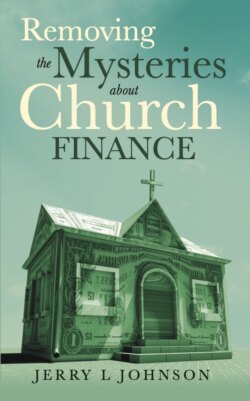Читать книгу Removing the Mysteries about Church Finance - Jerry L. Johnson - Страница 7
На сайте Литреса книга снята с продажи.
INTRODUCTION
Оглавление“What ever happened to that church that used to be here on the corner?" "
Oh, I don’t know, it’s not around anymore.”
It is a sad situation when a church must close its doors. About 4,000 churches close their doors each year; some because they can’t pay their bills; with a smaller number being commissioned as replacements. That could represent as many as 40,000 displaced church members each year. Project that number out ten years and you see the population of church-going Christians melting. This is not acceptable and must be reversed.
But before going any farther, the following question will overlay everything else: What is the purpose of the Christian Church? (There will be opportunity later to discuss the purpose of your own specific church.
To fulfill the Great Commission as Jesus commanded in Matthew 28:18. This is sought to be fulfilled in thousands of ways, such as the goal of one Baptist Church to bring in at least one thousand non-English speaking members within five years. They greatly exceeded the goal. No one Jesus reached directly spoke English, neither did he, although he could have.
Churches that close are not fulfilling the Great Commission and may have encountered a door that God closed. Maybe they were as the tree in John 15:2, "Every branch in me that beareth not fruit he taketh away: and every branch that beareth fruit, he purgeth it, that it may bring forth more fruit."
Closures are not unique to churches, of course. In 2017, 6400 commercial stores closed, with another 3800 estimated for 2018. This parallel is drawn to emphasize the vulnerability of a church. There are approximately 3.8 million retail establishments in the USA compared to about 384,000 churches (all denominations). This comparison should be alarming: one tenth the number of churches produce roughly a number equal to retail closures each year. To put this in perspective, retail closing equal .16%, churches equal .98%. This should be alarming for churchgoers and leaders. (These comparisons were made before the COVID-19 Pandemic, which permanently closed approximately 100,000 businesses.)
The deepest concern expressed in this book is how many of these churches failed because of financial or other non-ministerial reasons? A church has a business enterprise component, which should not be confused with the Great Purpose of the church. The business enterprise component supports and makes possible functions of the church, and as such, someone is responsible. A church with the roof falling in, bills overdue and unpaid is hardly a sterling testament to the Great Commission. The business enterprise component keeps this from happening.
In reviewing the curriculum of several seminaries, and discussions with young seminary graduates, the core seems solid for the ministerial focus but with only a cursory understanding of business enterprise aspects.
While pastors are the leaders of the church, they generally rely on knowledgeable lay persons for the technical aspects of finance. Many pastors are not prepared for or want the CEO functions. The purpose of this book is not to critique pastors but to save struggling churches before they reach the tipping point. It is the pastor who sets the direction for the church, sets the tone, and defines what the church is to be known for.
2 Corinthians 9:10-12
10 Now he that ministereth seed to the sower both minister bread for your food, and multiply your seed sown, and increase the fruits of your righteousness;
11 Being enriched in everything to all bountifulness, which causeth through us thanksgiving to God.
12 For the administration of this service not only supplieth the want of the saints, but is abundant also by many thanksgivings unto God.
